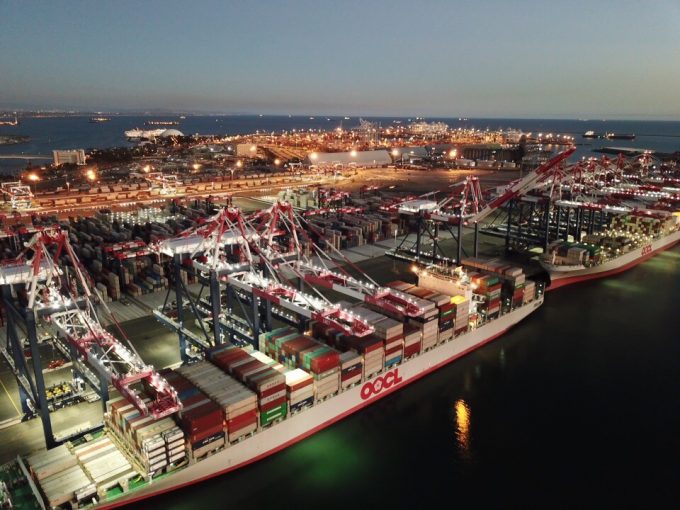Container spot rates have peaked as all major trades see prices fall
There was more evidence in this week’s container port freight markets that peak prices on ...
TFII: SOLID AS USUALMAERSK: WEAKENINGF: FALLING OFF A CLIFFAAPL: 'BOTTLENECK IN MAINLAND CHINA'AAPL: CHINA TRENDSDHL: GROWTH CAPEXR: ANOTHER SOLID DELIVERYMFT: HERE COMES THE FALLDSV: LOOK AT SCHENKER PERFORMANCEUPS: A WAVE OF DOWNGRADES DSV: BARGAIN BINKNX: EARNINGS OUTODFL: RISING AND FALLING AND THEN RISING
TFII: SOLID AS USUALMAERSK: WEAKENINGF: FALLING OFF A CLIFFAAPL: 'BOTTLENECK IN MAINLAND CHINA'AAPL: CHINA TRENDSDHL: GROWTH CAPEXR: ANOTHER SOLID DELIVERYMFT: HERE COMES THE FALLDSV: LOOK AT SCHENKER PERFORMANCEUPS: A WAVE OF DOWNGRADES DSV: BARGAIN BINKNX: EARNINGS OUTODFL: RISING AND FALLING AND THEN RISING

Shipper and forwarders planning their container shipment bookings for the third quarter can expect a new wave of blanking announcements over the next two-to-three weeks.
While the second quarter of the year was characterised by a wave of cancelled sailings, there have, so far, been relatively few announced for the third quarter, according to eeSea data.
During July, there are some 235 headhaul sailings scheduled for the Asia-North Europe and transpacific trades, with just five blanked so far. In comparison, May saw 245 sailings and 51 cancellations, and June saw 223 sailings and 28 blanks.
However, SeaIntelligence Consulting founder Lars Jensen told a TOC Events webinar this morning that shippers could expect more blankings for July unveiled soon.
“July is now just five weeks out and that’s typically when the first bookings for those sailings would be made, so I would expect carriers to announce blank sailings in the next two or three weeks – not necessarily for all of the third quarter, but certainly July.”
Last week saw some sailings on the transpacific trade “unblanked” – for example, on Friday OOCL announced that the Ocean Alliance would reinsert two June sailings on the PCS1 and GCC2 Asia-North America services.
However, Mr Jensen cautioned: “We are beginning to see unblanking, but I do not believe this is sign that demand is returning. What this is a sign of is that the enormous amount of capacity withdrawals was slightly overdone.
“It is not a sign of strong demand, but rather shows that the carriers would rather blank too much than too little.”
He explained that blank sailings had proved to be carriers’ only way of maintaining revenue and that, should the industry suffer a freight rate drop in line with the demand decline, the financial disaster would be magnified.
“Carriers cannot do anything about demand, but they have learned that they can affect rates. If you take out fuel costs, spot rates today are 25% higher on the Asia-North Europe trade than they were a year ago, and 40% higher on the transpacific. So the strategy is clear – remove as much capacity as it takes to prevent rates from sliding.
“How much will carriers lose? We think full-year demand will decline by about 10%. If carriers lose this volume but manage to maintain freight rates, the overall loss to the shipping industry will be about $800m.
“If they lose the volume and the rate levels, the overall industry loss could amount to $23bn, and the sole difference between the two scenarios is how carriers pull capacity,” he said.
Comment on this article
Gary Ferrulli
May 26, 2020 at 4:33 pmThe headline is like stating the date, it’s pretty obvious. If carriers lower their rates they will lose money. The $23. Billion is a very speculative amount, but reflects about what they lost in 2009. But their actions of the last 18-20 months of managing capacity to the markets has kept them from loosing huge amounts, some well managed companies making money, others (usually government affiliated) losing.
If that process remains in place, as an industry they are likely to make money. It comes down to management decision making.